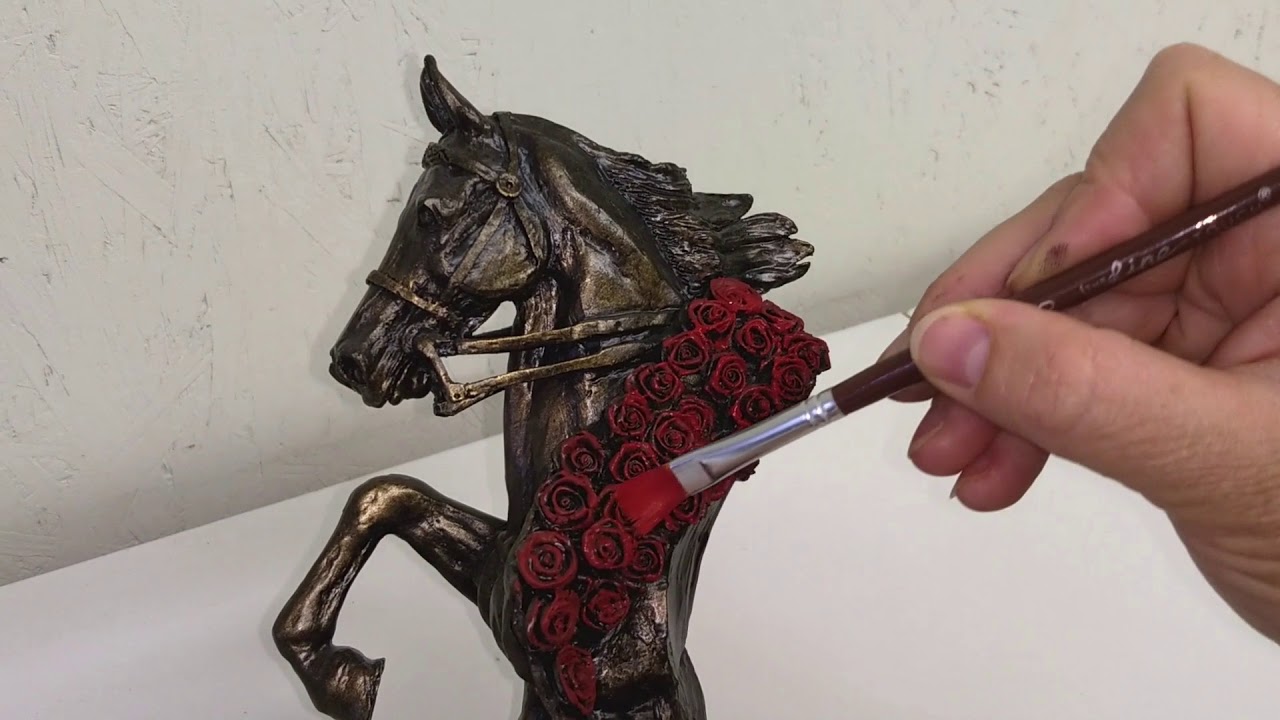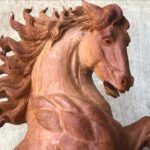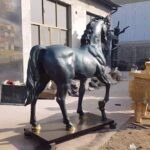
A horse head represents strength and energy. Its sculpted look combines modernity and traditional style. Ancient cultures believed that the movements and ears of horses could tell the future. Horse head statues are often crafted with detailed craftsmanship in the mane and accentuated musculature in the face. While they are not as detailed as some other types of statues, they can still be very striking. The fragmented cut on these pieces also adds modernity to the sculpture.
Ilfracombe statue of the First Duke of Wellington
The statue was erected in 1844 and is now known as the ‘First Duke’. It is situated in front of the Glasgow Gallery of Modern Art. It was sculpted by Carlo Marochetti. However, in the 1980s, an orange traffic cone was placed on the head of Wellington. This was probably a result of alcohol abuse. In addition, the statue was painted over to represent a ‘welcome’ from the First Duke.
The statue is located on a pink granite plinth, facing the processional way leading to the ‘Wellington Monument’ in Hyde Park. The plinth is made from Peterhead and Stirlinghill quarry granite. The grey granite dais on top of the plinth is used as a pedestal. The statue is carved from captured French cannons. The plinth is engraved with the name WELLINGTON and the years 1769-1852 in raised bronze characters.
The ‘Wellington Monument’ is part of the city’s heritage. It was erected in the year of the British Empire’s expansion and in the city of Glasgow, where social unrest was rife. Tories hoped that the statue would unite the city and immortalise the character and achievements of the British people. A century later, that statue remains a relic of the past, but it’s also part of the city’s cultural legacy.
Secretariat statue at Keeneland racetrack
On Oct. 12, a bronze statue of Secretariat was unveiled at the Keeneland racetrack in Lexington, Kentucky. The bronze statue, created by Jocelyn Russell, captures the iconic horse as he won the 1973 Kentucky Derby. The bronze statue is one and a half times the size of the horse itself. It will be displayed outside the sales pavilion until the festival concludes.
The 3,800-pound Secretariat statue was hand-crafted in Norman, Okla., and was mounted on a flatbed trailer. A three-quarter-ton pickup truck pulled the statue into place in front of the sales pavilion, where a ceremony was scheduled to unveil it. Afterwards, the racetrack hosted a public reception for Secretariat, which featured a special concert by the horse’s owner.
The bronze Secretariat statue stands approximately eighty feet tall and is covered in a red patina. The statue was created by Russell, who was concerned with how lifelike the horse would look. Located in the heart of horse country, the statue was unveiled in 1989 and continues to draw crowds. Secretariat is the only two-year-old to win the Preakness.
The new Secretariat statue at KeenelAnd has a special significance to Kentucky. The famous Thoroughbred racehorse was raised in Paris and left an indelible mark on the state’s signature industry. The statue is the work of Washington-based artist Jocelyn Russell. In addition to the statue at Keeneland, Secretariat’s grave at Claiborne Farm in Paris is also a popular attraction.
The monument is a tribute to the legendary Thoroughbred. The statue stands 11 feet tall and weighs approximately three thousand pounds. Ron Turcotte, who died in 2010, will not be present during the unveiling, but his brother will be. Kate Chenery Tweedy and Gaetan Turcotte will be present to welcome Festival attendees. Although Ron Turcotte will not be present at the unveiling, the Secretariat statue is a tribute to the legendary horse.
The Secretariat statue at KeenelAnd racetrack honors the legendary thoroughbred’s achievements. The horse won the Kentucky Derby and the Preakness Stakes by 31 lengths, making him the first Triple Crown winner since 1948. He is the only horse to win the Triple Crown three times and set the track record at each location. Keeneland’s new monument honoring Secretariat was unveiled yesterday.
Carrousel statue in London
The Arc de Triomphe du Carrousel is an iconic monument in the City of Westminster in the heart of London. The sculpture’s central arches, the most striking feature of the monument, measure nearly six metres in height. Its design was inspired by the triumphal arch of Constantine in Rome. The sculpture’s design includes a bas relief of a battle between two Corinthian rose-coloured marble columns. Its shape was also inspired by the Marble Arch in London, which stands on the Carrousel statue in the middle.
It was initially designed to be a statue of Napoleon, but the French President rejected the idea and the sculpture remained empty until 1828, when the site was reopened. After that, a statue of an allegorical figure was placed in its place. Located right next to the famous Arc de Triomphe, the Carrousel is a must-see for any visitor to the city of London.
Still Water Horse statue in London
The Still Water Horse statue is an outdoor sculpture in London. It is best viewed during the warmer months but is also quite attractive when visited in winter. Although it is a popular tourist attraction in London, its quiet, serene environment is not without its own charms. Located near Marble Arch, this statue is a popular picnic spot for locals and visitors alike. Here are some tips for visiting this statue. Listed below are some ideas to make your visit to Still Water as enjoyable as possible.
The artist Nic Fiddian-Green was born in 1963. He is a native of the Hampshire countryside and has been sculpting dogs for 35 years. His studio overlooks the Surrey countryside, which he uses for inspiration. In each of his sculptures, he aims to capture the majesty and strength of the animal. The Still Water Horse statue is a landmark of the London Zoo. The sculpture is an amazing sight, and is a wonderful reminder of the equine connection between man and horse.
The Still Water horse statue is an outdoor bronze sculpture of a disembodied head. It was created by British artist Nic Fiddian-Green and was installed in the Marble Arch area in 2011. The sculpture will be moved to Achille’s Way near Hyde Park Corner in 2021. It is an interesting contrast to the busy city streets of central London, and can be seen from almost any location in the city. There is a beautiful, quiet spot to relax while viewing Still Water.
The Still Water Horse statue is a wonderful tribute to British artists. It was designed by British artist Nic Fiddian-Green, who was a jeweller by profession. The British artist is the master of horse sculptures and shares Lalique’s love of nature and the art of creating sculptures. The sculpture is poised on the tip of its muzzle, while the crystal robe is made to exact measurements. This luminous moment in time is an exquisite reminder of the art of stillness.

